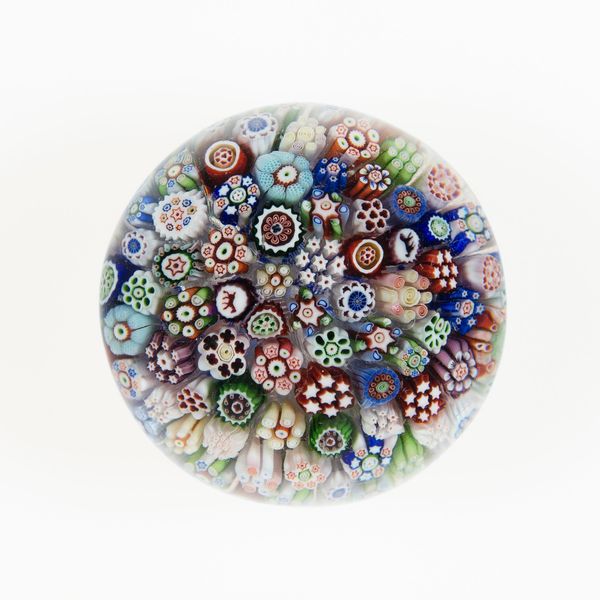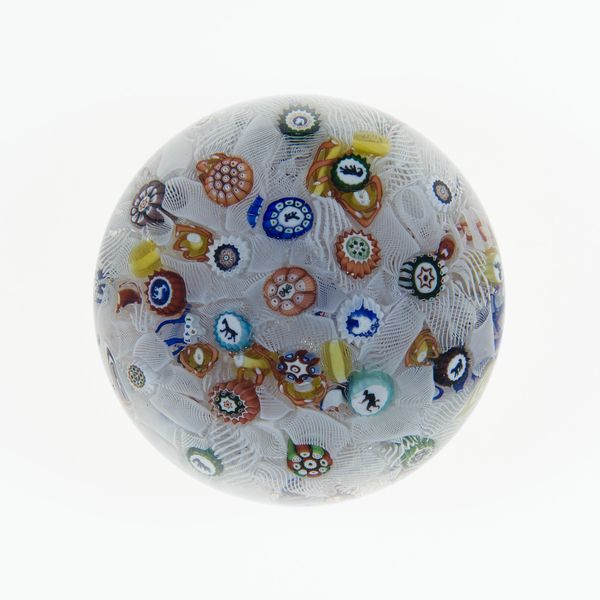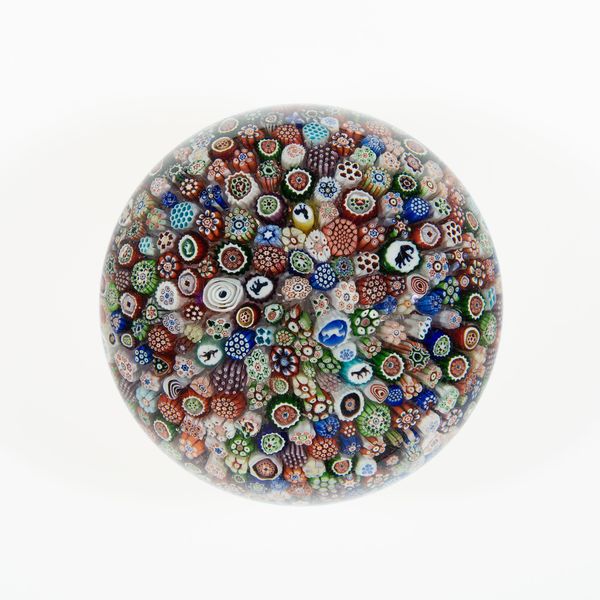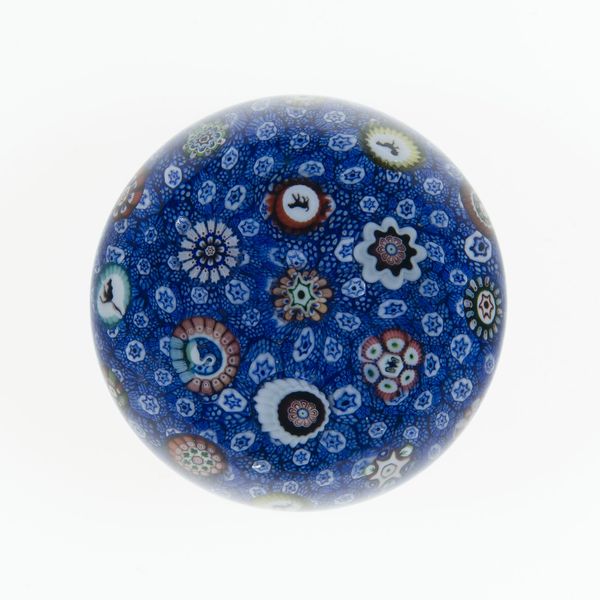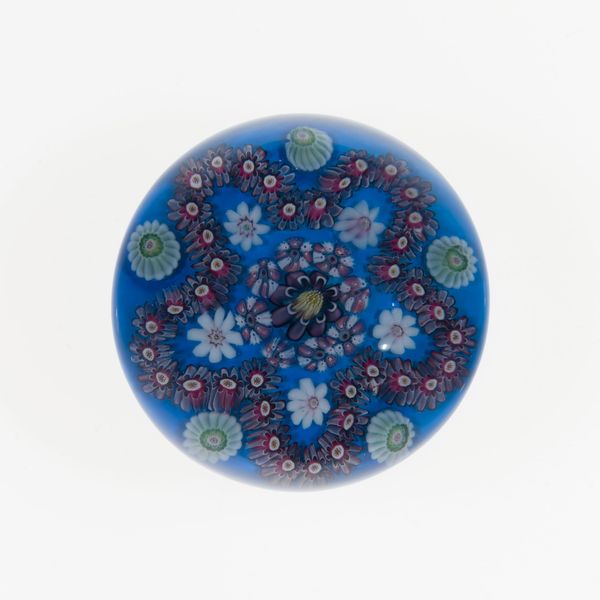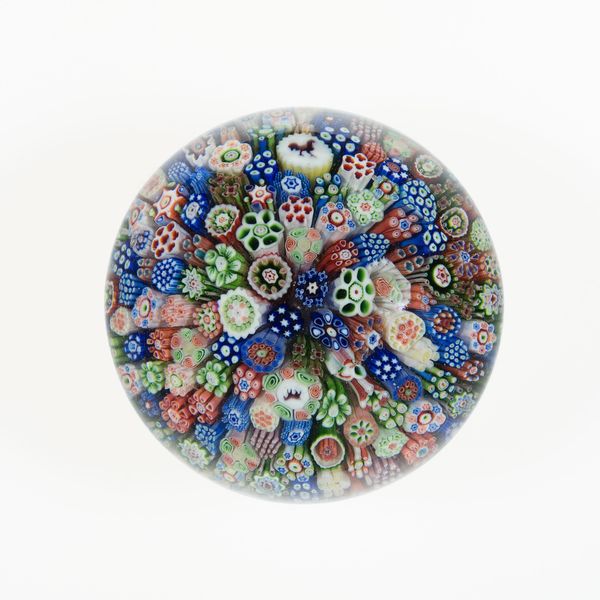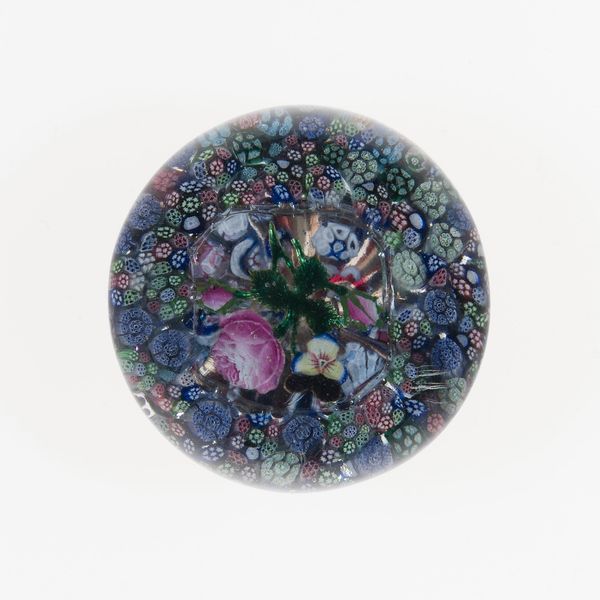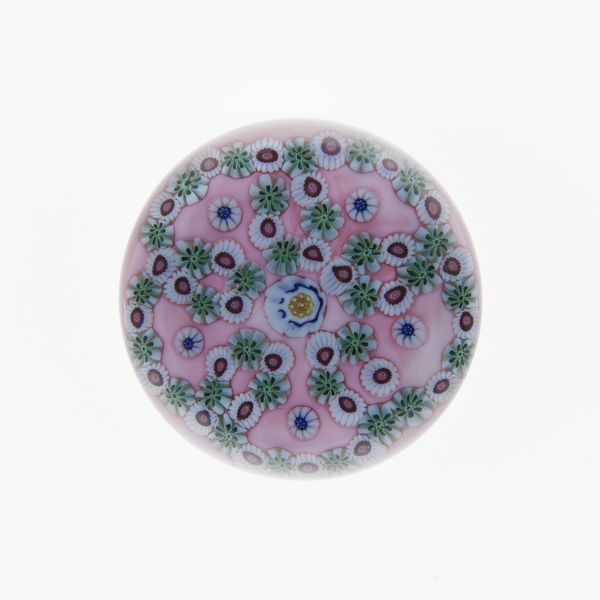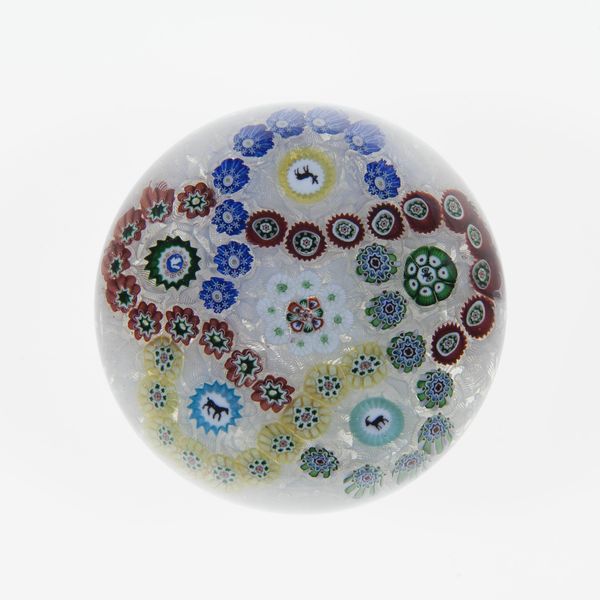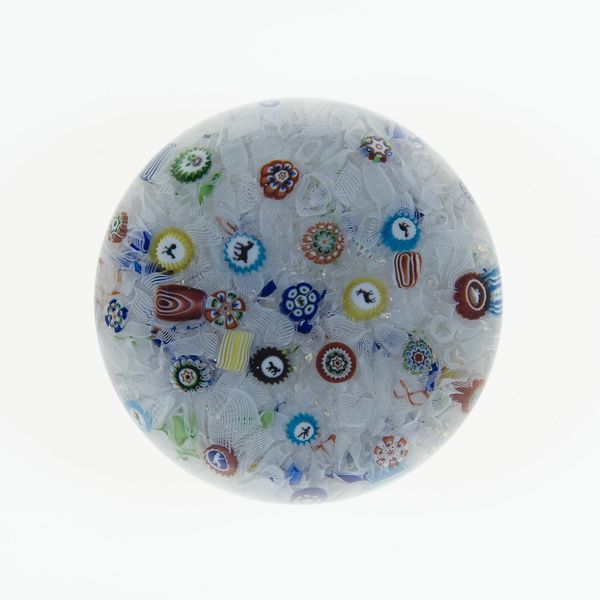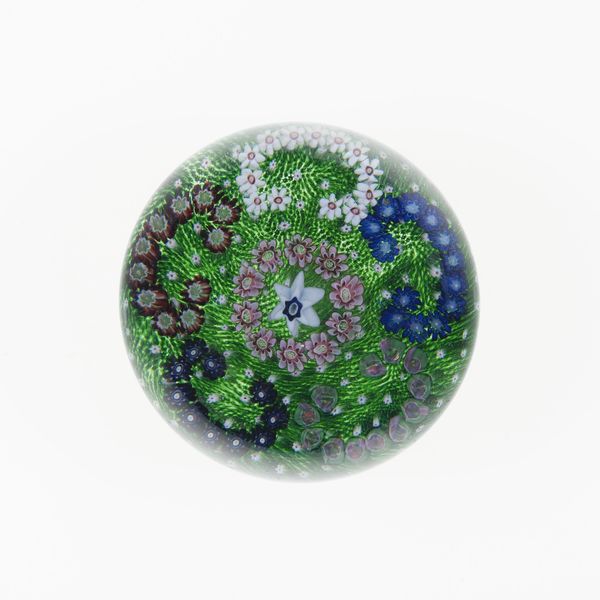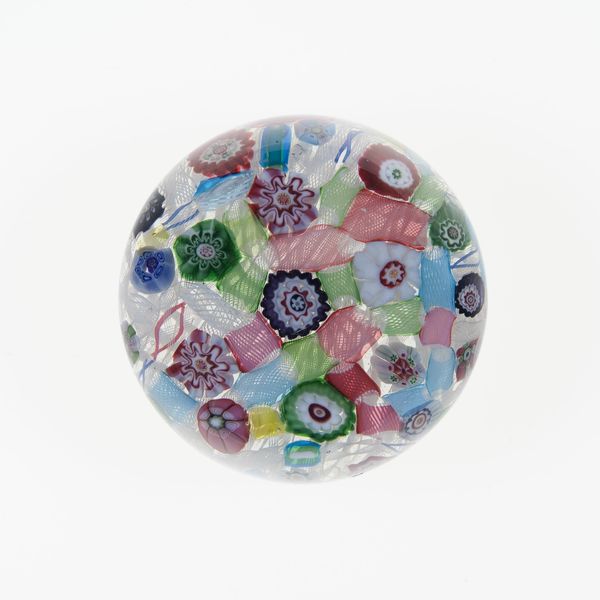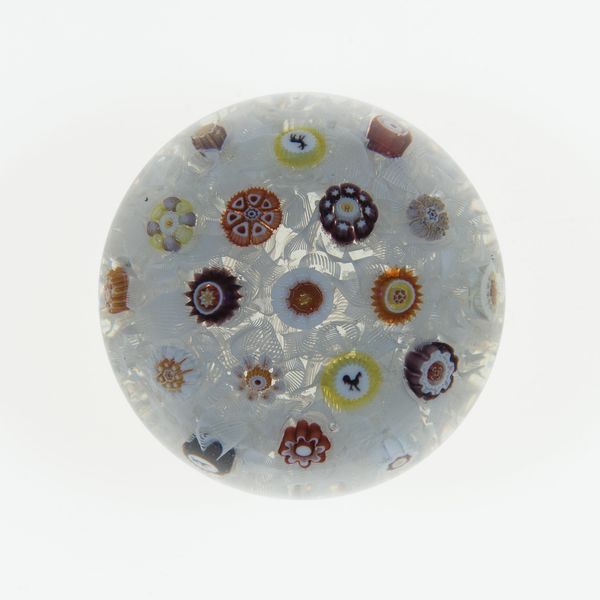
Dimensions: Diam. 7.9 cm (3 1/8 in.)
Copyright: Public Domain
Editor: This is *Paperweight*, made around 1845-1855 by the Compagnie de Saint Louis. It's a glass sculpture. The arrangement of geometric forms gives me the sense of something almost biological, like cells under a microscope. What do you see in this piece, beyond just a decorative object? Curator: It’s fascinating you mention the biological aspect. The rigid, geometric structure in glass clashes with an organic effect through its intricate design. I'd consider the history of glassblowing and its labor context, especially mid-19th century in France. Who had access to luxury goods? Whose labor produced them? The floral motifs themselves often carried gendered meanings; floral arrangement was largely a female pursuit. How does this affect the object's interpretation for a contemporary audience? Editor: That's a point I hadn't considered! So the piece reflects not only aesthetics but also social hierarchies of the time? It's almost a time capsule in glass. Curator: Precisely. Consider the act of preserving flowers, capturing a fleeting moment in time. Is it possible that this echoes the desire to maintain a specific social order or preserve beauty in the face of a rapidly changing world? What statements are made when this order excludes much of the populace, and actively represses certain identities and/or genders? Editor: I guess I viewed it more superficially at first, purely for its visual appeal. The fact that such beauty might obscure historical imbalances gives me a new perspective on even "simple" decorative art. Curator: And that’s precisely where art history meets contemporary theory! By critically engaging with an object's past and its ongoing relationship with today’s socio-political sphere, we learn about art's capacity to shape, as well as be shaped by cultural forces. It’s a conversation between then and now. Editor: Absolutely! It's given me a lot to think about regarding art's role in reflecting and perpetuating social dynamics. Curator: Hopefully it will help inform a more considered response to other examples of decorative art.
Comments
No comments
Be the first to comment and join the conversation on the ultimate creative platform.
